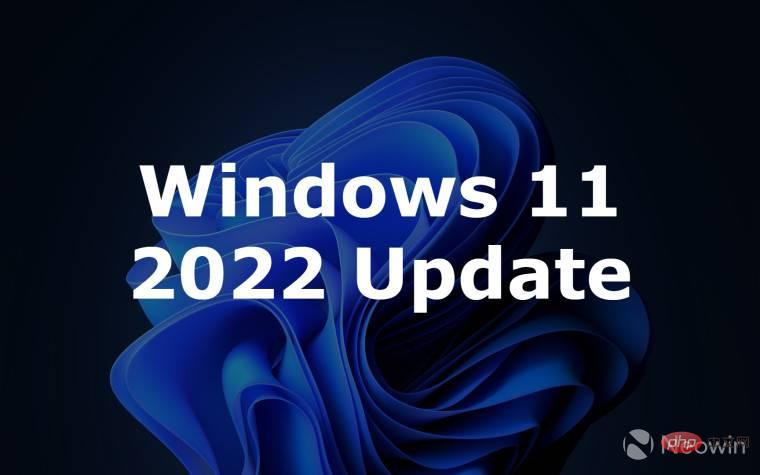How to solve Windows 11 22H2 dynamic disk upgrade error code 0x8007001?

Microsoft released its Windows 11 2022 feature update last month. The update is gradually rolling out to users with compatible PCs. The system requirements haven't changed since last year's initial 21H2 build, which means if you already have a supported PC, you should receive the update. While this is true, it appears that Microsoft has blocked the update on systems with dynamic disks.
The report comes from German outlet Deskmodder, where a forum member noticed the issue while trying to perform an in-place upgrade to Windows 11 version 22H2 on a disk set to dynamic. This was not an issue on the initial 21H2 build. While trying to upgrade, the error message "0x8007001" pops up, which usually occurs due to disk-related issues. The user tried swapping the install.wim file from the 22H2 setup with the one from 21H2, and the upgrade process apparently worked fine.
Dynamic disks offer more features than basic disks, such as the ability to create volumes across multiple disks (spanning and striping), run RAID 5, etc., although it does have its limitations. Microsoft, however, generally no longer recommends using dynamic disks. Instead, the company recommends using its Storage Spaces and hardware RAID controllers for functionality historically provided by dynamic disk setups. This may be why 22H2 installation fails on such disks. Microsoft says:
Windows has deprecated dynamic disks and we no longer recommend using them. Instead, we recommend using basic disks or using newer Storage Spaces technology when you want to consolidate disks into larger volumes. If you want to mirror a Windows boot volume, you may need to use a hardware RAID controller, such as the one included on many motherboards.
If you want to know whether it is a basic disk or a dynamic disk, you can check it by following these steps:
- By right-clicking the "Start" button or in Win Run "diskmgmt.msc" in the R (Run) dialog box to enter "Disk Management".
- Right click on the boot drive (C:) or any other drive and go to "Properties"
- Go to the Properties dialog box "Hardware" tab
- Select the boot drive model in the "All Disk Drives" window
- The properties dialog box for the drive model opens
- Transfer Go to the "Volume" tab and click on the "Fill" option.
This will show you whether your disk type is Basic or Dynamic. It also shows the partition style i.e. GPT or MBR.
The above is the detailed content of How to solve Windows 11 22H2 dynamic disk upgrade error code 0x8007001?. For more information, please follow other related articles on the PHP Chinese website!

Hot AI Tools

Undresser.AI Undress
AI-powered app for creating realistic nude photos

AI Clothes Remover
Online AI tool for removing clothes from photos.

Undress AI Tool
Undress images for free

Clothoff.io
AI clothes remover

Video Face Swap
Swap faces in any video effortlessly with our completely free AI face swap tool!

Hot Article

Hot Tools

Notepad++7.3.1
Easy-to-use and free code editor

SublimeText3 Chinese version
Chinese version, very easy to use

Zend Studio 13.0.1
Powerful PHP integrated development environment

Dreamweaver CS6
Visual web development tools

SublimeText3 Mac version
God-level code editing software (SublimeText3)

Hot Topics
 1389
1389
 52
52


